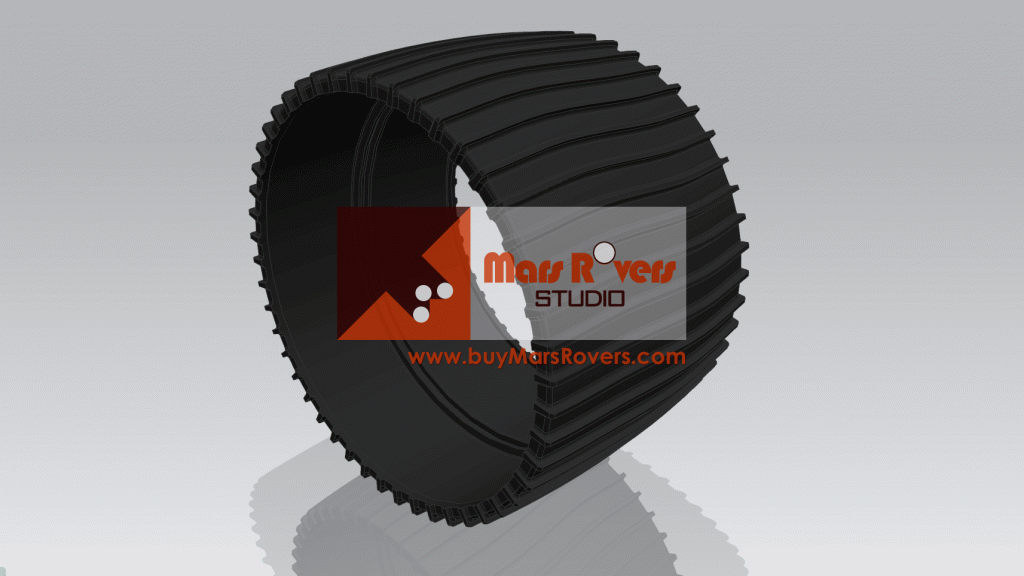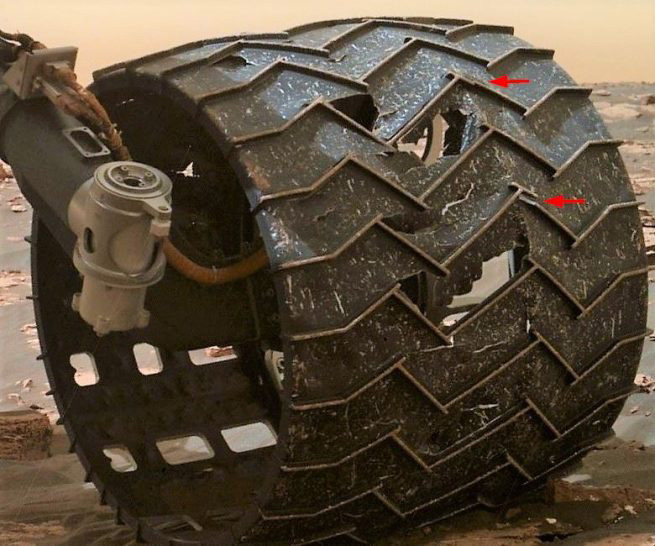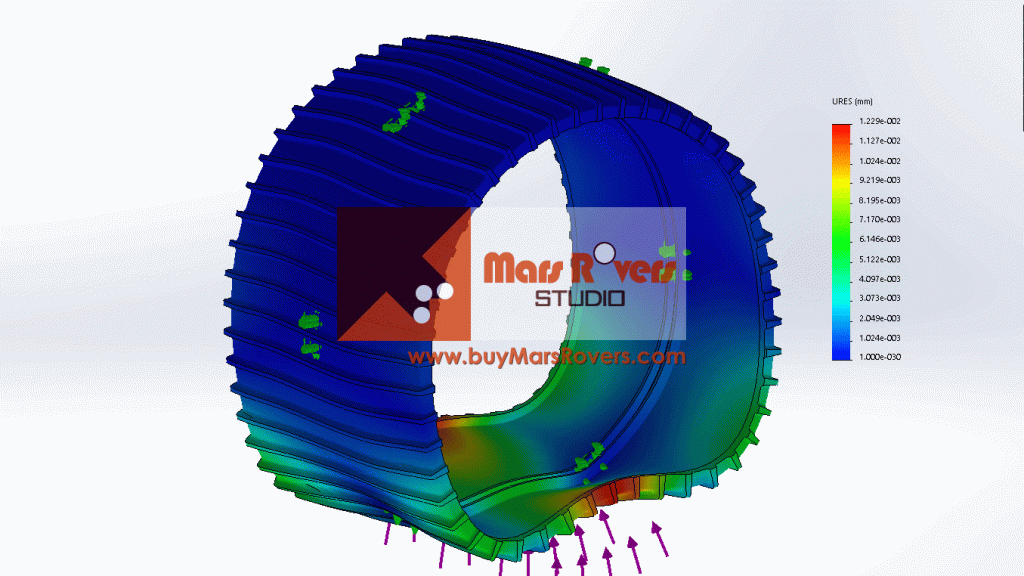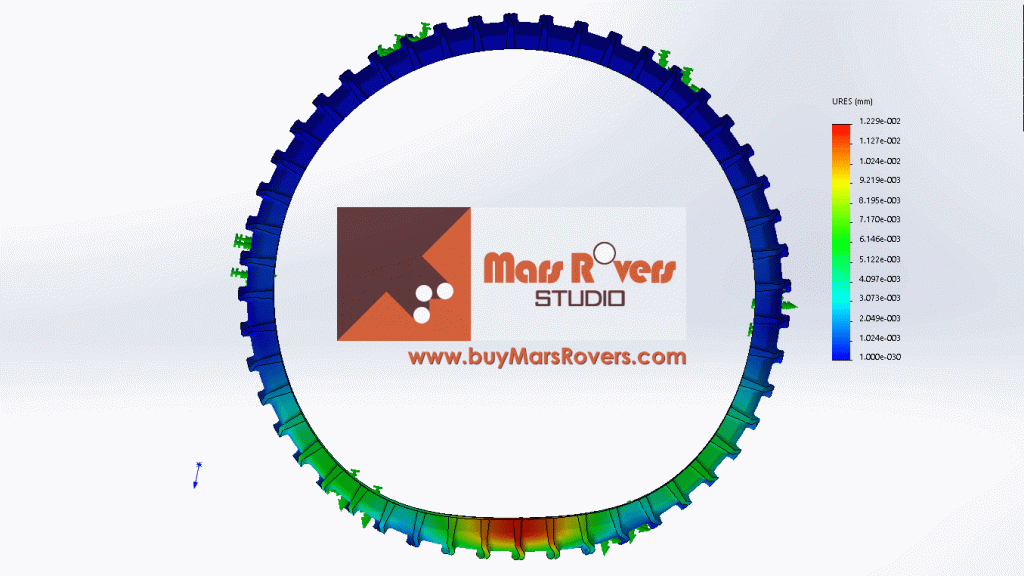The wheels of the Mars 2020 Perseverance Rover are made of special aluminum. There are cleats on the outer surface to add traction. This is actually the first challenge during our building journey of the Perseverance Mars Rover Replica.

The special aluminum NASA used to build the Mars 2020 Perseverance Rover’s wheels is obviously very tough so as to bear at least 1/6 weight of the real Perseverance Mars Rover of which the total weight is 2,260lb or 1,025kg. When the Mars 2020 Perseverance Rover driving over the uneven Martian terrain, each wheel may have to bear up to 1/5 weight or even more of the Mars 2020 Perseverance Rover. But the real challenge comes from the cleats. The cleats of the 1:3 Perseverance Mars Rover replica’s wheels are only around 2mm thick. Unless we could find a kind of really awesome aluminum, the 1:3 cleats will easily break on terrains with sharp rocks due to that the burden of a single wheel will all come to the contact point between the cleat and the rock.
The endurance of the wheels of Perseverance Rover’s predecessor – Curiosity Rover is actually good but while driving over sharp, pointy rocks they did break. Mars 2020 Perseverance Rover’s wheels are redesigned to be more robust – narrower than Curiosity’s, but bigger in diameter, 20.7 inches (52.6 centimeters) versus 20 inches (50.8 centimeters) and made of thicker aluminum, have twice as many treads and are gently curved instead of chevron-patterned. But still, they will damage if the terrain harshness is beyond their design standard.
When we choose the material for the 1:3 Perseverance Mars Rover replica’s wheels, our goal is to build them to withstand pressure from almost all kinds of terrains. The reason is quite simple – people would love to enjoy the excitement of manipulating the 1:3 Perseverance Mars Rover replica on terrains similar to Mars but they also would love to see all parts intact after each and every ‘mission’. Dust is OK but damages are definitely a heartbreaker.
In the end, after weighing the pros and cons, we decided to use steel to build the 1:3 Perseverance Mars Rover replica’s wheels. The building cost of each 1:3 Perseverance Mars Rover replica’s wheel is around 1,000 USD. Six wheels are almost 6,000 USD. The cost is high but they don’t break. They are heavy than aluminum but the 1:3 Perseverance Mars Rover replica doesn’t go on the rocket.



